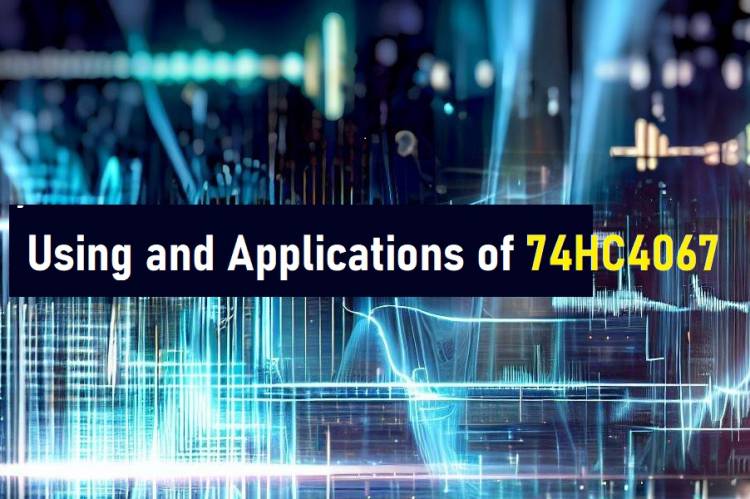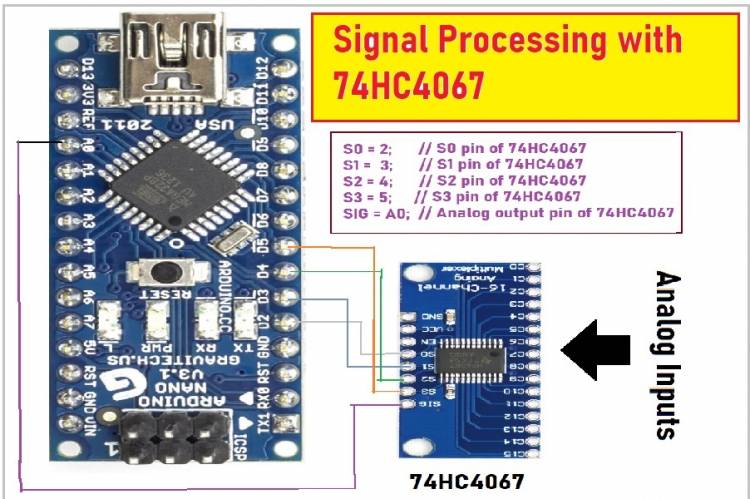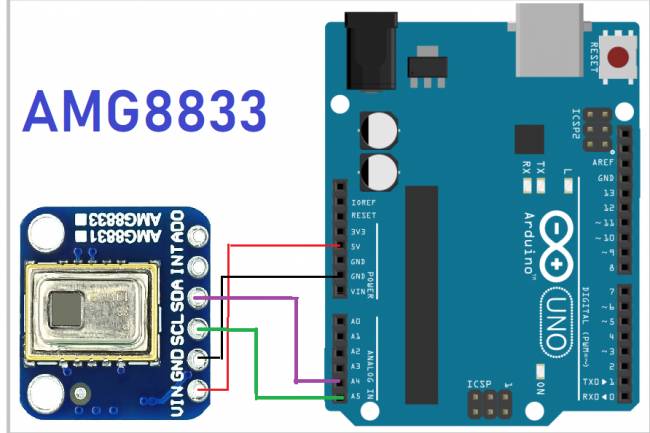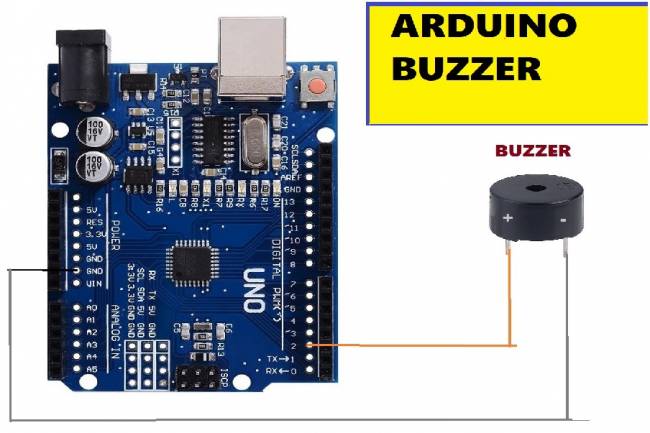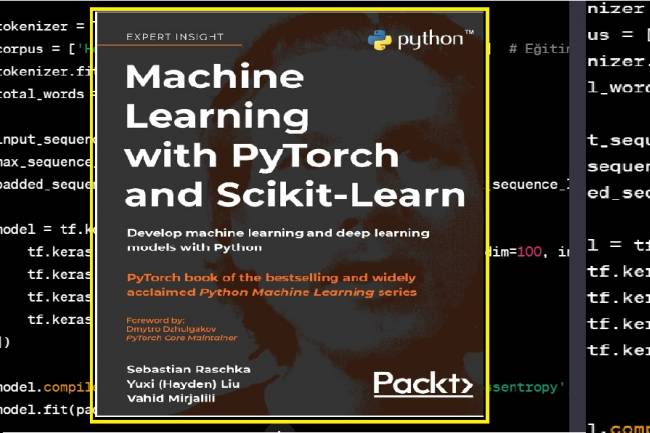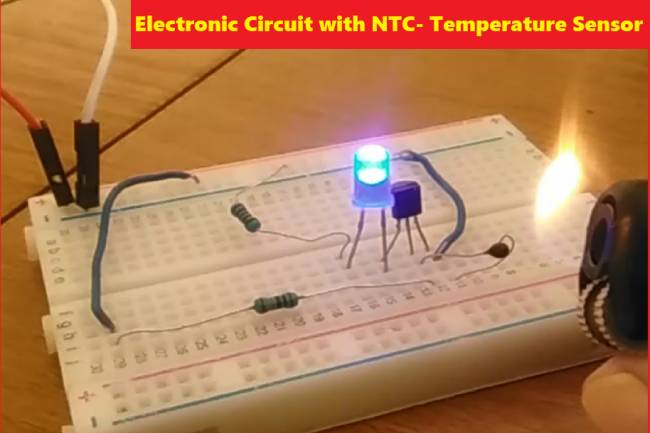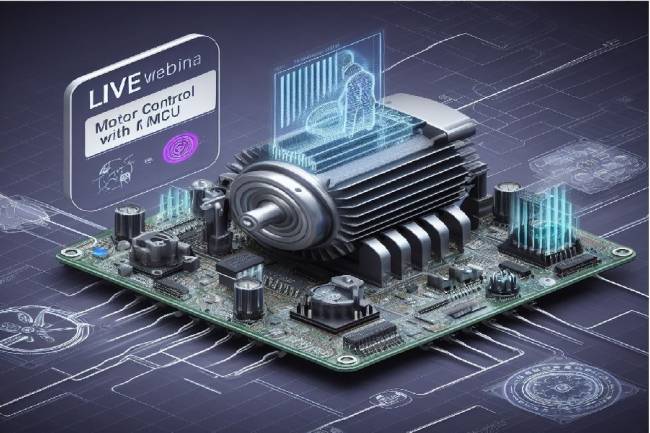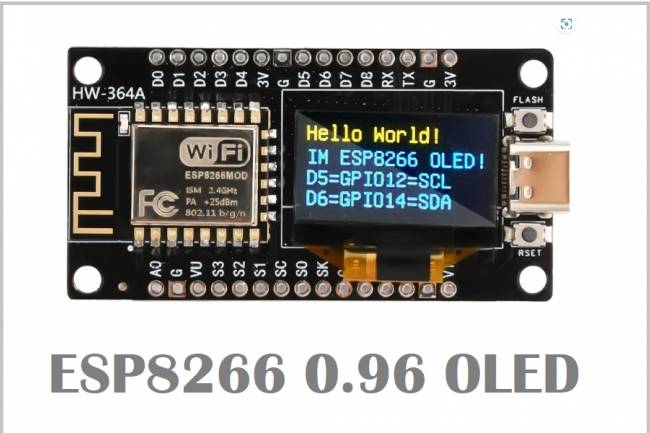Using and Applications of 74HC4067 Analog Multiplexer/Demultiplexer Integration with Arduino Nano
Signal analysis, signal processing
Arduino Nano and similar microcontrollers allow us to easily perform digital and analog operations in a wide range of projects. In this article, we will focus on how to use the Arduino Nano and the 74HC4067 analog multiplexer/demultiplexer IC together. We will also discover what kind of applications this combination enables.
What is Arduino Nano and 74HC4067? Collecting Data from Multiple Sensors - 74HC4067
Arduino Nano is a popular microcontroller board. Thanks to its simple programming interface and wide user base, it provides an ideal platform to start learning and develop various projects. The 74HC4067 is an analog multiplexer/demultiplexer IC used to route or multiply multiple analog signals. This IC is very useful for managing analog signals with microcontrollers.
Connection and Basic Usage:
Making connections between Arduino Nano and 74HC4067 IC is quite simple. The S0, S1, S2 and S3 pins of the 74HC4067 are connected to the digital pins of the Arduino Nano. The COM pin indicates the common port of the sensors, and the SIG pin indicates the pin from which the read analog signal will be received. Then it becomes possible to read the selected channels by writing the microcontroller code.
An example is given below.
#include <Arduino.h>
const int S0 = 2; // S0 pin of 74HC4067
const int S1 = 3; // S1 pin of 74HC4067
const int S2 = 4; // S2 pin of 74HC4067
const int S3 = 5; // S3 pin of 74HC4067
const int SIG = A0; // Analog output pin of 74HC4067
void setup() {
Serial.begin(9600);
pinMode(S0, OUTPUT);
pinMode(S1, OUTPUT);
pinMode(S2, OUTPUT);
pinMode(S3, OUTPUT);
}
void loop() {
for (int i = 0; i < 16; i++) {
selectChannel(i);
int sensorValue = analogRead(SIG);
Serial.print("Channel ");
Serial.print(i);
Serial.print(": ");
Serial.println(sensorValue);
delay(1000); // wait 1 second
}
}
void selectChannel(int channel) {
digitalWrite(S0, channel & 0x01);
digitalWrite(S1, (channel >> 1) & 0x01);
digitalWrite(S2, (channel >> 2) & 0x01);
digitalWrite(S3, (channel >> 3) & 0x01);
}
It is used to select the analog inputs of the S0, S1, S2, S3, 74HC4067 IC in these codes.
Binary “0000-0001-0010-0011....1111” data is sent to “S” outputs at intervals of one second.
Scope of application:
1. Environmental Sensor Networks: Arduino Nano and 74HC4067 are an ideal option for connecting multiple environmental sensors to a single microcontroller. In this way, you can sequentially read signals from different directions of the environment and monitor environmental variables. For example, you can measure values such as air quality, temperature, humidity.
2. Data Acquisition Systems: The combination of Arduino Nano and 74HC4067 is very useful for data acquisition systems used in agriculture, industry or scientific research. It can be used to collect and save analog data from different sources.
3. Prototypes and Hobby Projects: Electronic prototypes and hobby projects often require the integration of different sensors. Thanks to this combination, it becomes easier to work with different sensors and develop complex projects.
4. Smart Home and Automation Systems: For home automation projects, Arduino Nano and 74HC4067 can be used to connect sensors in different rooms into a single central control system. It is possible to make smart home applications by collecting data such as light, temperature and movement.
Arduino Nano and the 74HC4067 IC offer a powerful combination for those who want to manage and manipulate analog signals. The combination of these two components opens the door to various fields of application and allows you to develop your projects more flexibly, efficiently and creatively. The basic connection and application ideas we provide in this article can help you understand the potential of the Arduino Nano and the 74HC4067 combination.
Related Article: Data Science and Electronics
